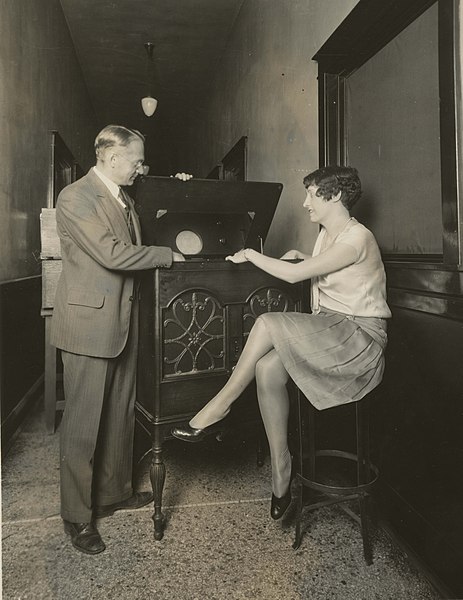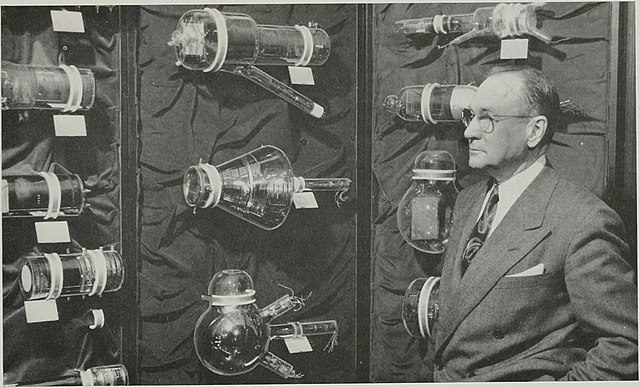The iconoscope was the first practical video camera tube to be used in early television cameras. The iconoscope produced a much stronger signal than earlier mechanical designs, and could be used under any well-lit conditions. This was the first fully electronic system to replace earlier cameras, which used special spotlights or spinning disks to capture light from a single very brightly lit spot.
Zworykin holding the iconoscope tube, in a 1950 magazine article
A graphic from Kálmán Tihanyi's "Radioskop" patent from 1926 (part of the UNESCO's Memory of the World Programme)
Two iconoscope tubes. The type 1849 (top) was the common tube used in studio television cameras. The camera's lens focused the image through the tube's transparent "window" (right) and onto the dark rectangular "target" surface visible inside. The type 1847 (bottom) was a smaller version.
Iconoscope and mosaic from a TV camera, circa 1955.
Vladimir Kosma Zworykin was a Russian-American inventor, engineer, and pioneer of television technology. Zworykin invented a television transmitting and receiving system employing cathode ray tubes. He played a role in the practical development of television from the early thirties, including charge storage-type tubes, infrared image tubes and the electron microscope.
Vladimir Zworykin, c. 1956
Zworykin demonstrates electronic television (1929).
Drawing from Zworykin's 1923 patent application Television System.
Zworykin and some of the historic camera tubes he developed





